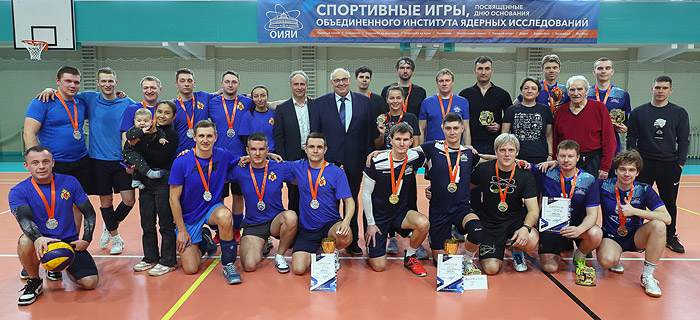The JINR Weekly newspaper “Dubna: science, community, progress” published since November 1957.
Если цель большинства массовых популярных изданий – делать научные истины достоянием людей, далеких от науки, то Еженедельник ОИЯИ ориентируется не на читателя вообще, а на вполне определенную аудиторию: ученых, инженеров, рабочих высокого класса. В этом специфика нашего еженедельника, в этом заключается и сложность работы коллектива газеты, который ставит перед собой цель сочетать популярность изложения с исключительной научной строгостью, достоверностью, ведь всякая сенсационность нашим авторам и читателям чужда.
“Мы – за интернациональную суть науки, за содружество ученых, за прогресс во всех областях человеческой деятельности”. А. С. Гиршева, редактор газеты «Дубна» с 1984-го по 1996 год
В условиях международного научного центра трудно провести резкую грань между темой науки и темой сотрудничества ученых разных стран, которое с самых первых номеров стало еще одной ведущей темой. Практически все ведущие ученые стран-участниц, имена которых носят аллеи на площадках Института, были авторами газеты или с готовностью давали интервью ее корреспондентам. Таким образом, еженедельник “Дубна” стал международной научной трибуной, рассказывая о выдающихся результатах научных исследований и технических достижениях. При этом газета никогда не забывала о том, что ОИЯИ -уникальная школа высшей квалификации для ученых и инженеров из всех стран-участниц. Путь становления ученого стал еще одной магистральной темой газеты. Пожалуй, не будет преувеличением сказать, что на ее страницах создается в какой-то степени коллективный портрет современного ученого, достаточно достоверный и объективный. Знакомясь с рассказами о деятельности ученых, как известных, так и молодых, можно глубже понять, как делается наука, как она трудна и как нелегок “путь к ее сияющим вершинам”.“Дубна” – такая же необходимая часть жизни ОИЯИ, как препринты, библиотека, семинары, конференции. “Дубна” – часть того, что я бы назвал институтским “информационным полем”, и без нее это “поле” будет неполным, дырявым. Из недели в неделю она ведет свою летопись будничной жизни науки в ее преломлении через судьбу ОИЯИ и работающих здесь людей и сообщает нам друг о друге, а всем вместе – о нас самих (как сказал бы М.Жванецкий). Дневник нашей с вами жизни – вот что такое “Дубна”… Профессор А.Вдовин, Лаборатория теоретической физики
Main materials (#15, 17.04.25)
The 26th JEMS Training Programme started at JINR
On 14 April, the next International Training Programme for Administrative and Technical Staff JEMS-26 started at the Joint Institute for Nuclear Research. The programme is aimed at providing participants with a broad overview of the scientific research, international cooperation and educational activities of the Joint Institute, as well as with its history and social infrastructure.

Awards
According to the Decree of the President of the Russian Federation № 163 of 25 March, 2025 “On awarding state awards of the Russian Federation” for merits in scientific activities and many years of conscientious work, Head of the Sector of the Laboratory of Nuclear Reactions Vladimir Utenkov was awarded the Medal of the Order “For Merits to the Fatherland”, I class.
To pass on the memory to new generations
On 10 April, a jubilee seminar dedicated to the 110th anniversary of the birth of one of the founders of the Laboratory, Corresponding Member of the USSR Academy of Sciences F.L.Shapiro was held at FLNP.

Visit of the delegation of Bulgaria to JINR
On 7-8 April, the representatives of the Republic of Bulgaria, with the members of the National Assembly Yordan Todorov and Angel Yanchev visited the Joint Institute for Nuclear Research.
Spring IT School: “JINR is a place where your ideas can be brought to life”
On 10 April 2025, the JINR Spring School of Information Technologies concluded at the Meshcheryakov Laboratory of Information Technologies. Throughout two days, students from universities of the Russian Federation and the Republic of Belarus presented the results of their work performed on the topics of JINR research under the supervision of MLIT specialists.

Ringing of medals, glitter of awards
The XXVI Sports Games dedicated to the 69th anniversary of JINR were held this year in nine sports out of ten. Unfortunately, the weather conditions did not allow us to hold skiing competitions but we will definitely hold them next season.

The world of enthusiastic people
The photo exhibition “About Dubna and not only…” will be open until 25 April in the JINR Scientists’ Club. The authors of the exhibition are FLNP employees Sergey Negovelov and Andrey Kirilov.
